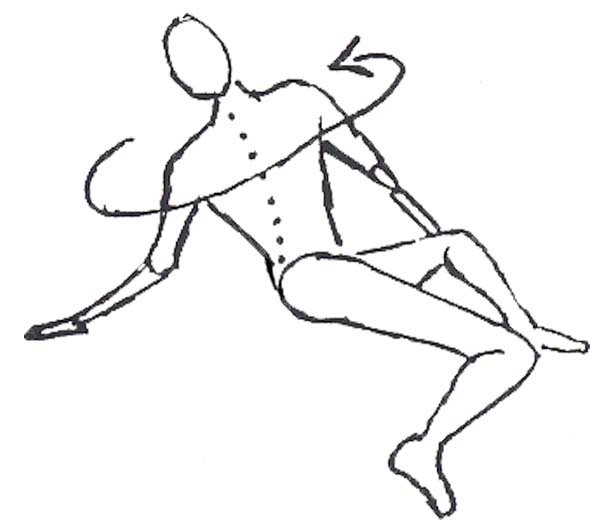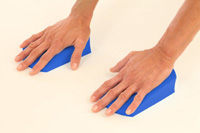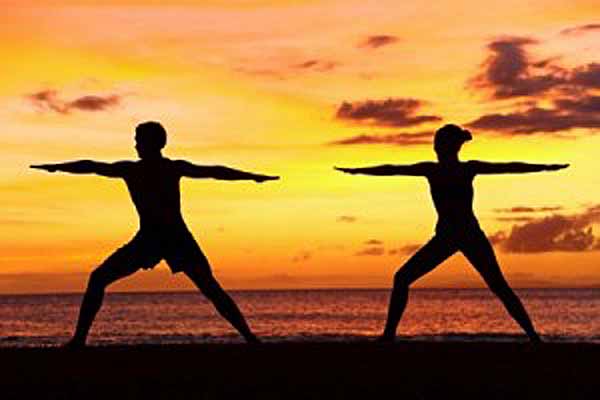Ask the Yogi: Can yoga help build bone density?
Q: I want to do exercises that help me build bone density. Does doing yoga help to make bones stronger?
A: Many types of yoga can help you to strengthen your bones by encouraging your body to build bone density. Often people are told that in order for an exercise to build bone it needs to be ‘weight bearing’ or in other words an exercise that makes the body perform actions under the resistance of body weight.
Although there are many different types of yoga, most yoga styles offer asanas or poses that cause the participant to ‘bear’ the weight of their body. The standing poses of lunge, warrior, and triangle are poses that cause the body weight to concentrate in the hips. Poses such as upward dog, downward dog and plank cause us to bear body weight in the arms. Twisting poses and back extensions will concentrate the weight bearing effect in the spine.
Try these poses if you would like to create a positive effect in your bones:
Lunge Pose
- Start in a table top position with your hands under your shoulders and your knees under your hips. Bring your left leg forward. Use two blocks under your hands.
- Align your left leg so that the knee is directly over your ankle, making your shin perpendicular to the floor.
- Keep your legs hip distance wide.
- Keep your left hip, knee and ankle lined up as if against a wall.
- Pull your chest forward and your hips backward to elongate your spine.
- Tuck the toes of your right foot under and slowly straighten your right leg.
- Make sure your left leg stays in place and the knee is not allowed to move forward as you straighten your right leg.
- Reach backward through your right heel to feel a calf muscle stretch.
- Balance your weight evenly across the ball of your right foot.
- Keeping your hands on the blocks, pull your chest forward and your hips backward to elongate your spine.
- Gradually lighten the pressure away from your hands to allow your legs to work harder.
- Breathe slowly and deeply.
- Relax your right knee down to the floor and then repeat the entire process on the opposite side.
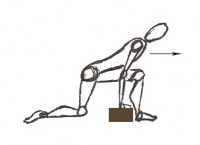

Plank Pose
- Start in a table top position with your hands under your shoulders and your knees under your hips. Keep an even pressure over your palms. Keep your lower back neutral and your spine long.
- On an exhale, step your left foot back placing the ball of your foot against the floor.
- Pull your chest forward to elongate your spine and pull in your abdomen tightly.
- If you feel comfortable, share your weight between your hands and your left foot and step your right foot back without raising your hips higher.
- Inhale deeply and expand the back of your chest. Pull your chest forward and your hips backward to keep your spine long.
- After one or two deep breaths, slowly lower your knees to the floor.

Sublime Twist
- Start in a seated position with your feet and knees wide apart and your feet on the floor. Maintain a slow and deep breath.
- Lift your chest away from your hips and drop your knees toward the left.
- The outside of your left leg and the inside of your right leg will touch the floor.
- Place your left foot so that it touches the top of your right thigh.
- Place your hands on the floor and twist slowly toward your left, leaning away from your hips.
- Keep your hands basically under your shoulders.
- Keep your spine long by pulling your chest away from your hips.
- Breathe slowly and deeply.
- Continue to twist slightly more, repositioning your hands as you need.
- Limit your twist to what feels like a comfortable sensation in every part of your body. Do not allow one area to feel too strong of a sensation.
- Return to center, then slowly twist in the opposite direction.
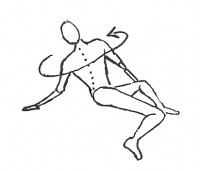
Of course you will want to make sure you use proper form in every action and do not experience pain or discomfort in the pose. Don’t think of this as a quick fix because the full positive effect is achieved when these actions are frequently applied.
Remember, nothing written here is intended to diagnose or treat a disease. Ask your doctor if these exercises would be right for you.


